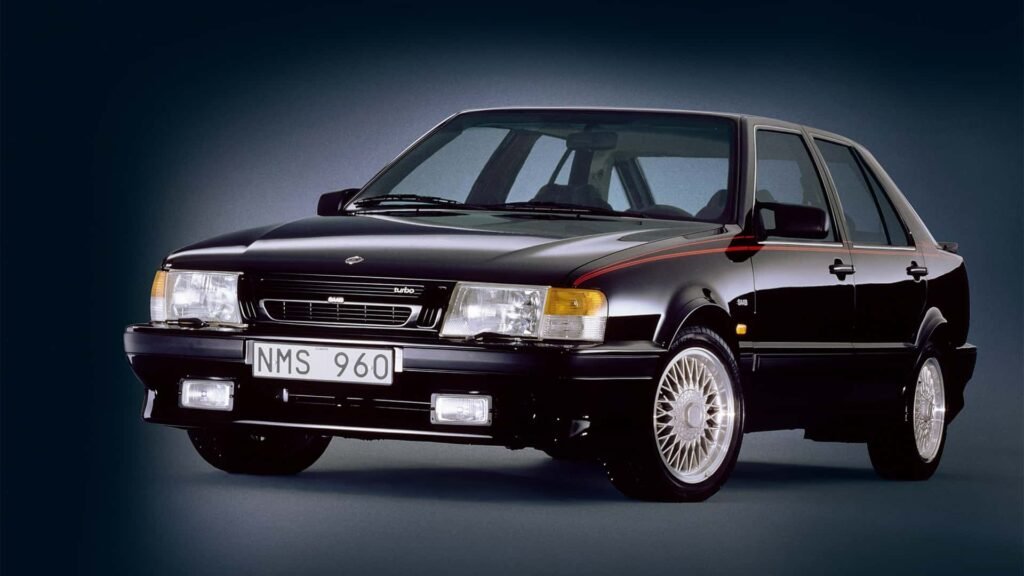In the mid-1980s, the automotive world witnessed the birth of a joint project between Swedish car manufacturer Saab and Italian giant Fiat. The 9000 was not only a testament to collaborative innovation, but also Saab’s first entry into the luxury segment. Launched in 1984, the 9000 quickly became one of the brand’s most recognizable products, and today its legacy endures for several compelling reasons.
Welcome to Timeless European Treasures, our weekly look at cars in the European market that defined an automotive generation.
Why do we love it?
The Saab 9000 earned our affection for its advanced design and technological solutions. Created as part of the Type Four platform in collaboration with Fiat, the 9000 shared its underpinnings with the Fiat Croma, Lancia Thema and Alfa Romeo 164. The distinctive bodywork, a joint effort between famed designers Giorgetto Giugiaro and Saab’s own designer Björn Envall, reflected a mix of Scandinavian elegance and Italian flair. Despite the visible similarities to the other platform twins, the 9000 stood out for improved crash protection and unique features.
A striking feature was the size of the 9000. It was shorter than the 900, a model that had a lower position in the hierarchy, but had a longer wheelbase. Due to its interior dimensions and transverse drivetrain, the EPA categorized the 9000 as a “large car” in the United States, a distinction shared only with Rolls-Royce at the time.

14 photos
When was the car launched?
The 9000 was unveiled to the motoring press on May 24, 1984 at Kolmården Game Park and entered the European market in 1985. The launch of the model marked the beginning of a new era for the brand and its entry into the luxury car segment.
What engines did it have?
Under the hood, the 9000 offered a wide range of engines, including naturally aspirated and turbocharged options. The line-up consisted mainly of Saab’s own 2.0 and 2.3-litre engines. A 3.0-liter V6, courtesy of Isuzu, was also part of the offering in certain countries. In an interesting experiment, one prototype even had a Saab V8 engine, but it never made it past the stages of mass production. The most powerful production mill was the 2.3 turbo with an output of 225 hp, slightly more than even the 3.0-liter V6.


Did it sell well?
With more than half a million units produced – a total of 503,087 to be precise – the Saab 9000 can be considered a commercial success for a brand that was generally more niche than other premium manufacturers at the time. The model was divided into three variants: the Saab CC (1985–1991), 9000 CS (1992–1998) and 9000 CD (1988–1997).
Fun facts about the Saab 9000
In addition to its technical achievements and sales figures, the 9000 also had some quirky and delightful elements. The inspiration for the seats, taken for example from The Muppet Show, added a touch of whimsy to the car’s interior. Furthermore, only seven parts were interchangeable between the 9000 and its Italian siblings due to Saab’s extra efforts to make the car safer than its competitors.
In 1993, Saab entered uncharted territory by integrating ‘steer-by-wire’ technology into a 9000 prototype as part of the pan-European initiative known as Prometheus (Program for European Traffic with the Highest Efficiency and Unparalleled Safety ). Within this ambitious program, Saab’s contribution stood out with a modified 9000, replacing the traditional steering wheel with a center-mounted joystick. This innovative arrangement not only eliminated the risk of body and facial injuries in the event of an accident, but also made the installation of airbags easier and more cost-effective, along with better visibility of the instrument panel. The groundbreaking prototype was put to the test by none other than Jeremy Clarkson in a memorable episode of Top Gear (see below).

